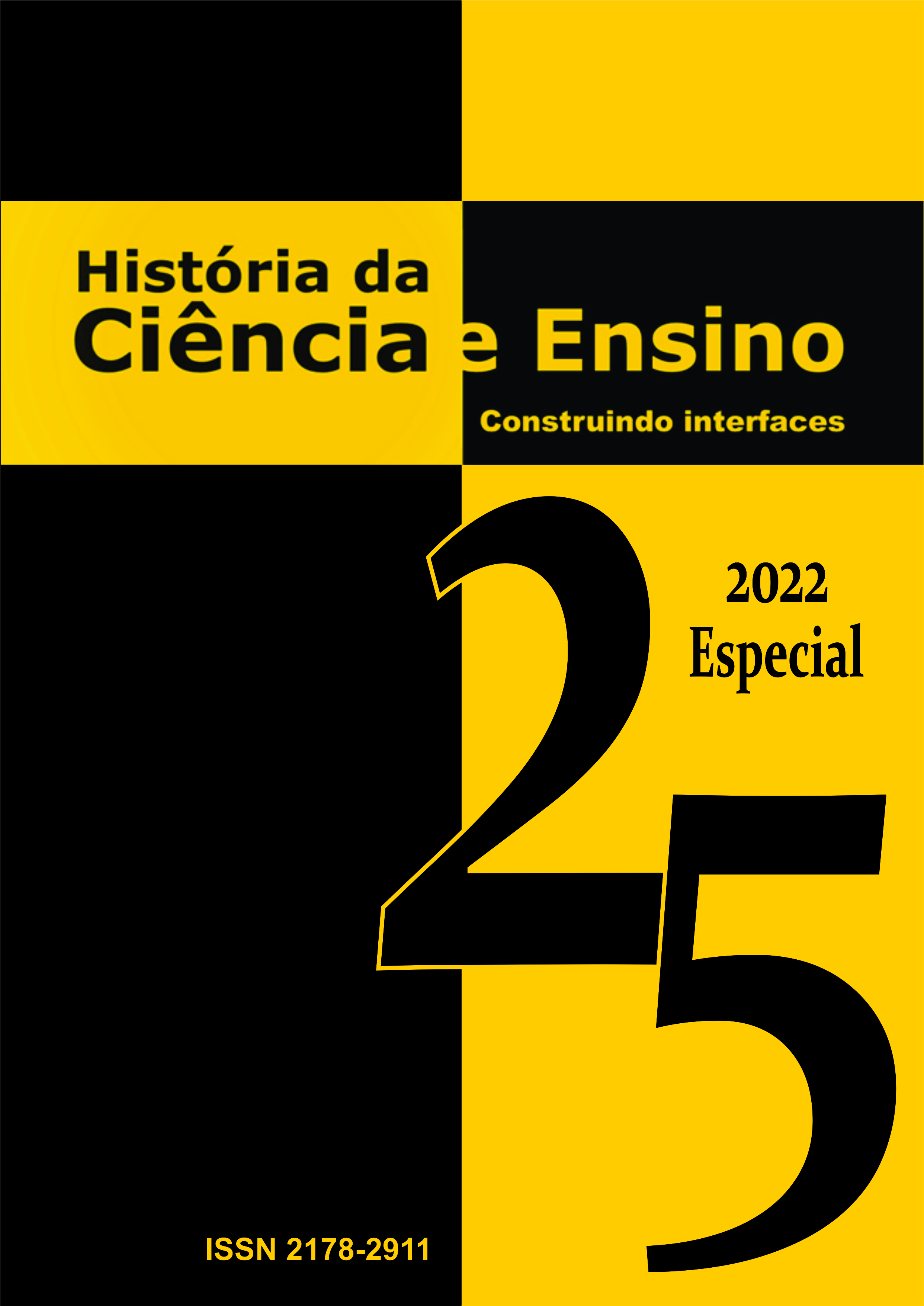Narrativas da Máquina a Vapor
tecnologia, ciência e cultura na relação com a natureza
DOI:
https://doi.org/10.23925/2178-2911.2022v25esppp263-281Resumo
Resumo
No século XIX a máquina a vapor interessou cientistas, engenheiros, artistas, paisagistas, cidadãos, pedagogos. Entre entusiasmos, esperanças e receios, o contacto com a máquina a vapor gerou pensamento sobre relações entre o natural e o artificial, sobre relações entre ciência e tecnologia, adquiriu alguma importância no desenvolvimento da inteligibilidade do mundo, subverteu a estética da representação e transformou a vida no planeta. Está no início de uma transformação acelerada da vida no e do próprio planeta. É uma época considerada por muitos como início do Antropoceno. Como investigadora/formadora, interessa-me construir abordagens não fragmentadas ao conhecimento e ao mundo. Somos herdeiros de algumas das discussões presentes nesta época, por exemplo, a dualidade natureza e cultura, ainda não ultrapassada. Neste texto pretendo compor algumas narrativas com origens disciplinares diferentes, construídas a partir de textos, de imagens, de objetos, e de estudos históricos, cruzando-as e explorando-as de um ponto de vista pedagógico. Pretendo, com isso, contribuir para o desenvolvimento de novos modos de vida para objetos "históricos" de ensino, colocando-os no interior destas narrativas. Trago histórias, cidades, pinturas, modelos pedagógicos de cartão (1877), um objeto tridimensional pedagógico da máquina a vapor (1940).
Palavras-chave: máquina a vapor; natureza-tecnologia-ciência; educação científica; fruição estética, histórias.
Abstract
In 19th century, the steam engine interested scientists, engineers, artists, landscapers, citizens, and pedagogues. Amidst enthusiasms, hopes and fears, contact with the steam engine has generated thoughts on the relationship between natural and artificial, on the relationship between science and technology, has acquired some importance in the development of the intelligibility of the world, has subverted the aesthetics of representation and has transformed life on the planet. The steam engine is at the beginning of an accelerated transformation of life on and of the planet itself. This is a time understood by many as to be the beginning of the Anthropocene. Being a researcher/trainer, I am interested in building non-fragmented approaches to knowledge and to the world. We are the heirs of some discussions present at that time, for example, the duality between nature and culture, not yet overcome. In the present text I intend to compose some narratives with different disciplinary origins, built from texts, images, objects, and historical studies, crossing them and exploring them from a pedagogical point of view. With this, I intend to contribute to the development of new ways of life as regards "historical" teaching objects, placing them within those narratives. I bring on stories, cities, paintings, pedagogical cardboard models (1877), and a three-dimensional pedagogical object of the steam engine (1940).
Keywords: steam engine; nature-technology-science; science education; aesthetic fruition; narratives.


